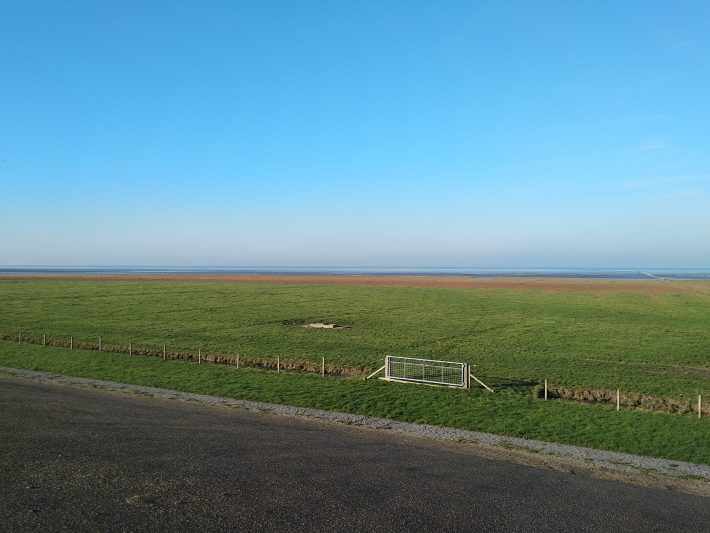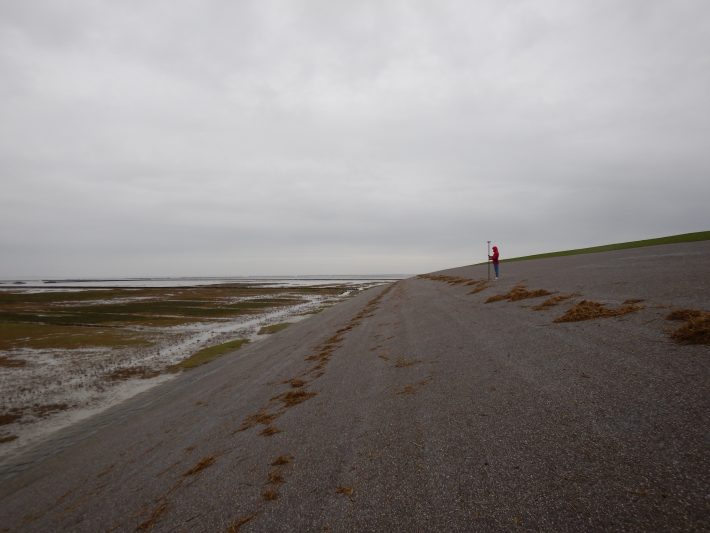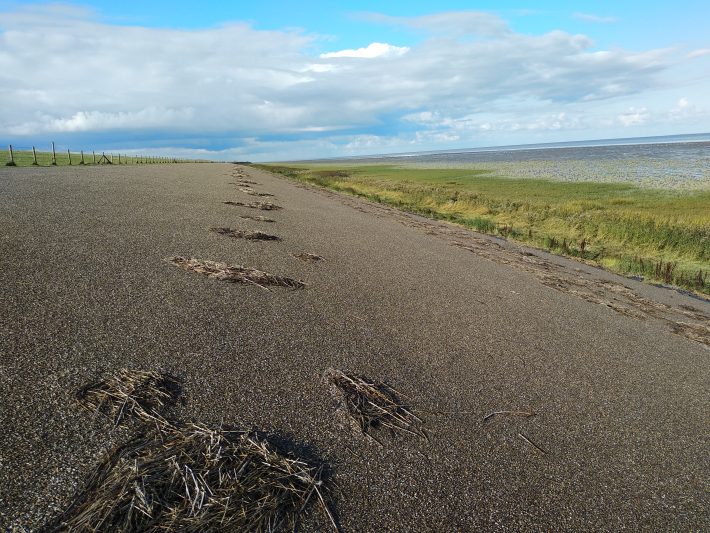Can salt marshes cut flood prevention costs?
A collaborative paper, published in the Journal of Applied Ecology from the University of Groningen (RUG) and the Royal Netherlands Institute for Sea Research (NIOZ) finds that while salt marshes are an effective tool for combatting flood damage, they are rarely found in the locations we need them most.

Salt marshes, a type of coastal wetland ecosystem regularly flooded and drained by tides, provide many important ecosystem services. Formed when mud and silt are deposited along sheltered sections of coastline, salt marshes are crucial habitats for fish, mammals, and resident and migratory birds.
One previously overlooked feature of salt marshes, however, is their capacity for flood and coastal protection.
How do salt marshes protect against floods?
RUG and NIOZ researchers found that salt marshes occurring in front of dikes (an embankment for controlling the waters of a sea or river) can reduce the wave height and wave run-up during storms. They can also potentially reduce the cost of flood protection in low lying countries, like The Netherlands.

The size of the wave run-up in the study was estimated using previous measurements taken of the location of natural material left on the beach after storms. This natural material, known as beach wrack, consists of algae, seagrasses, invertebrates and other organic matter deposited on the shores by the last high tide.
Beatriz Marin-Diaz, first author of the study, said “Compared to bare tidal flats, marshes are more effective in reducing run-up on the dikes. The main drivers appear to be the foreshore elevation and marsh width. Salt marshes with taller vegetation may also provide further protection.”
Furthermore, the study found that due to the tidal amplitude (the difference between high and low water) in the Wadden Sea increasing from west to east, the run-up on dikes was also higher in the east.
Can salt marshes act as a nature-based-solution against coastal floods?
Although marshes proved to be very effective in reducing wave run-up, they unfortunately do not naturally occur at locations where we would need more protection. The long-term analysis of the study shows that a salt marsh expands in areas where the adjacent tidal flats are higher, and retreated where the mudflats ahead are affected by erosion. The area’s where marshes are not developing tend to be lower and at a higher risk for flooding. But these are the exact areas in need of more protection.

Kornelis de Jong and Jan-Willem Nieuwenhuis, both co-authors of the paper, added “This research allows us to estimate the reduction of wave height and run-up depending on the presence and characteristics of the salt marshes in front of dikes. Now we can distinguish between protective requirements of dike-stretches with and without salt marshes, which will have a moderating influence on future reinforcement works and the costs of these stretches.”
To conclude, salt marshes are important as both a unique habitat and as a nature-based solution for protection against high water. In areas with naturally occuring salt marsh, sea dikes may need less reinforcements, thus reducing flood protection costs. However, it is precisely in locations where wave run-up on dikes is the greatest, that lack naturally occurring salt marshes.

Getting salt marshes where we need them to lower the wave run-up will only be possible with human interventions such as groynes, man-made structures preventing loss of beach sediment through longshore drift.
However, there is an additional dilemma: expansion of salt marshes may be good for flood risk management, but the benefit comes at the expense of tidal flats that are important for wading birds. Therefore, in areas where stimulating salt marsh formation is not ideal. it may be better to opt for ‘hard engineering’ solutions.
This article was developed from a University of Groningen press release.
Read the full paper:
Marin-Diaz, B., van der Wal, D., Kaptein, L., Martinez-Garcia, P., Lashley, C. H., de Jong, K., Nieuwenhuis, J. W., Govers, L. L., Olff, H., & Bouma, T. J. (2023). Using salt marshes for coastal protection: Effective but hard to get where needed most. Journal of Applied Ecology, 00, 1– 16. https://doi.org/10.1111/1365-2664.14413
Like what we stand for?
Support our mission and help develop the next generation of ecologists by donating to the British Ecological Society.